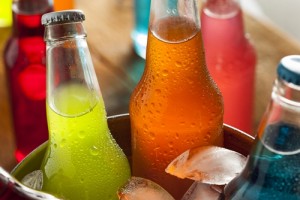
Packaging design can be a vastly important part of the overall development of a product. With an appealing image presented to consumers, average products can be transformed in the eyes of their users, giving them new levels of quality and improvement over time. Some brand owners apparently do not believe this, however, even as real-world design elements continue to increase in quality.
According to Packaging Digest, a recent report from global marketing technology company, Affinnova, found that packaging design has huge effects on which brands are successful and which brands are not in the beverage aisle. Oftentimes design can be a major influence that assists new brands to better compete against established leaders, oftentimes with such redesign investments seeing returns on spending of up to 50 times that of simply investing in advertising.
In analyzing the packaging of brands in several beverage categories, the company measured designs' abilities to hold the attention of consumers, expand and strengthen brand perceptions and convince consumers to make more purchases.  The most surprising factor discovered in this development is not how important design can be, but how undervalued it can be. Numerous companies were reported to spend millions on advertising yet saw their market shares decrease.
The most surprising factor discovered in this development is not how important design can be, but how undervalued it can be. Numerous companies were reported to spend millions on advertising yet saw their market shares decrease.
The conclusions of this study reflected the following recommendations for product owners:
- Create a program to evaluate and improve package design regularly
- Allocate a higher percentage of resources from advertising to design
- Evaluate designs in context of potential competition
Design used to approach new markets
Food Processing reported that in other instances, packaging design is being used to help distinguish brands from the pack, allowing them to take a unique section of the overall market. Chef Carla Hall, who appeared on "Top Chef" and co-hosts "The Chew," creates bite-sized artisanal cookies by hand, but needed a way to give her products a unique nature. As a result, she redesigned her packages with personal touches, including pressure-sensitive labels and hand-packed cups, bags and boxes. The products are placed in clear tubs, which work to both protect the food and allow shoppers a full 360-degree view of it so that they can be better informed when making decisions.
Hall said the switch from tins to tubs was largely to improve perception of the product. "We knew we wanted something light — something that was natural looking and … friendly," she told the news source.
Drawing attention and the eye
In other instances, the news source said, companies have taken several approaches that each focus on improving their re-branding efforts for long-term success. Birch Benders, a micro-pancakery, recently added new hand-drawn illustrations and several separate packaging means to its pancake mixes. The company's flagship packaging style is a jar, which can simply be shaken after the addition of water for easy and effective pancake mix. Working to increase its audience appeal, the company developed additional means to help it reach more customers. Now it has added pouches to its packaging line, including a 16-ounce pouch that stands up and a 24-ounce one that can be resealed and has a box-style flat bottom and strong side panels.
"We wanted to offer something that was visually stunning and that also tastes awesome and is super-easy to make. We're the only natural and organic, just-add-water pancake mix," said Lizzi Ackerman, Birch Benders COO.








